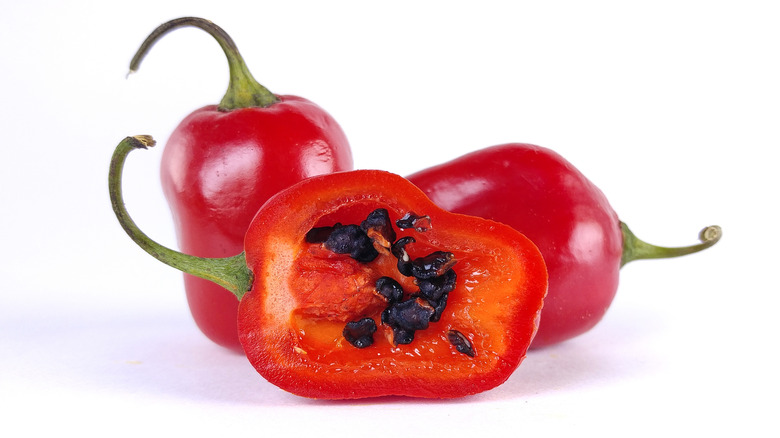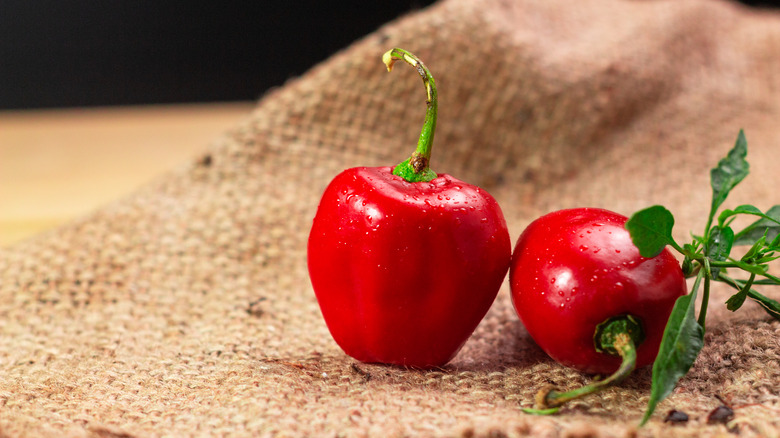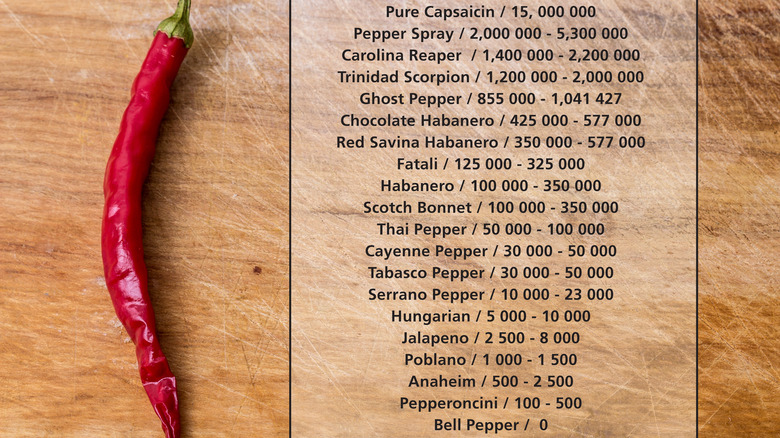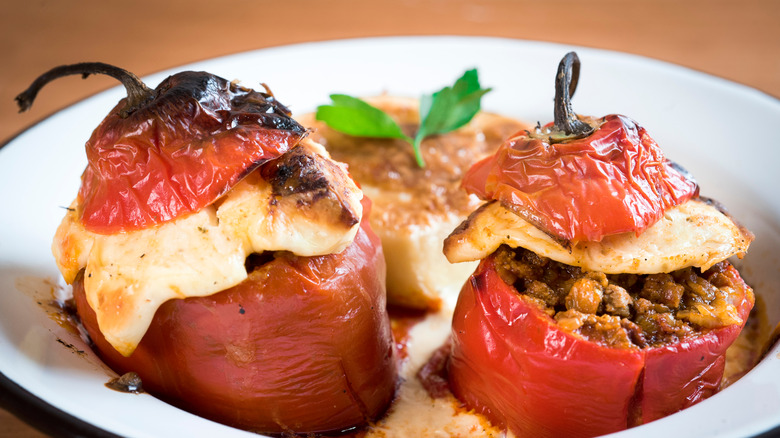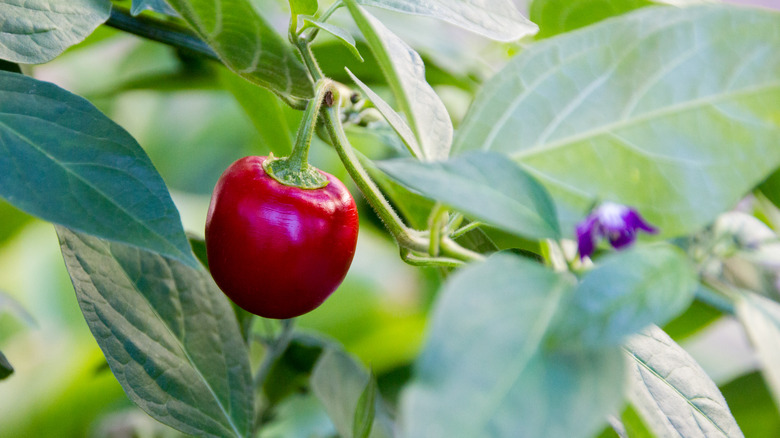What Is A Rocoto Pepper And How Spicy Is It?
There are a wide variety of peppers that you can find at grocery stores. Whether you want one for flavor, to add some color, heat, or maybe all three, there is a pepper for just about every occasion. The rocoto pepper brings just as much variety as regular bell peppers do. However, don't be fooled by the similar colors because the spice is anything but.
In fact, they are so similar to their bell pepper relatives that they can be stuffed, sautéed, and cooked the exact same ways. It wasn't until over 5,000 years ago that these spicy peppers were domesticated in Peru's Andean highlands (via The Spruce Eats).
There are about a million and one ways to ask for these peppers, since they can be called multiple different things. In South America, they are known as rocote, or "horse" in some parts of Guatemala and Mexico. They also get the name "apple pepper" in Peru for their apple-like appearance.
Whatever you want to call them, there is still a bit to learn!
What exactly is a rocoto pepper?
It is, of course, a pepper, but comes from the Capsicum pubescens species, which means the seeds are black and the flowers are usually purple. Whereas regular peppers have white seeds, with white flowers. They are also thicker and juicier than their relatives.
The rocoto pepper has a similar look to tomatoes, pears, and apples, hints the "apple pepper" name. The flesh is a lot thicker than regular peppers and is juicy like a tomato, with similarities in texture. It is great for a main course, just as well as a side dish.
The usual colors for this pepper are orange, red, and yellow; yellow is the hottest and red as the most distinct flavor profile. No matter the color, they are a bit temperamental when it comes to how they look to grow.
Despite where they are from, rocoto peppers don't grow that well in hot climates, but Cayenne Diane says they should be kept above 50 degrees Fahrenheit. In the right conditions, they can grow to be about 15 feet high.
How spicy is the rocoto pepper?
The spice of peppers is measured using the scoville heat unit (SHU) system. For reference, habaneros and scotch bonnets are some of the hottest peppers one can eat and are anywhere from 100,000 to 350,000 SHU, per PepperScale. The look and texture definitely don't give off "hot as hell" vibes.
Manzano peppers are only 12,000 to 13,000 on the SHU scale. Rocoto peppers are really close to habaneros, with a SHU of 30,000 to 100,000. It is possible that the rocoto can be "anywhere from four to forty times hotter than the jalapeno reference point," says Pepper Scale.
Even though it is a spicy pepper, there are still a lot of ways to cook it as an ingredient in a dish or have it used as a main dish. But if you aren't into spicy foods, it's safe to say eating a rocoto pepper probably isn't something to include on your bucket list.
How do you cook rocoto peppers?
You can go for baking, roasting, or steaming this dish. However, unlike other peppers, steaming a rocoto one won't give you the same texture and taste as bell peppers. They are a lot more moist (tomato-like, remember?), and therefore don't work best for steaming.
Baking or roasting them is a great way to keep in that moisture and flavor. If you want to do that, you can add them into salsas, or sauté into shrimp, chicken, veggies, and more. As mentioned earlier, they are also a great shape for stuffing too. In fact, you can stuff them with whatever you would a bell pepper, but you get a much stronger spicy level.
If you want to stuff a rocoto pepper, you should first boil them in hot water for about 8 to 10 minutes, or until tender. After that you can simply stuff and place in the oven at 350 degrees for about 10 to 15 minutes. If you want to roast them, it is the same process, just without the stuffing, of course
There are even rocoto chili pepper pastes that can be used to make sauces or dips.
Are rocoto peppers good for you?
While these spicy peppers aren't packed with all the needed nutrients a person should get in a day, they do still pack in a good amount of minerals and vitamins, per Speciality Produce. One of the coolest things these peppers can do is trigger the brain because of how spicy they are.
They contain capsaicin, a chemical that'll trigger the brain to feel spice or heat. When this happens it can have anti-inflammatory properties. Amigo Foods adds that the anti-inflammatory agent can relieve pain for rheumatism. Medical News Today says rheumatism is "pain and other symptoms" that affect muscles and joints.
There are some other pros, though. It has a ton of vitamin C, four times more than the vitamin C all-star, the orange. There are good amounts of calcium, potassium, folic acid, and vitamins A and E as well. These are all antioxidants that help protect your immune system. Don't worry about calories with this one either, since one serving only has 36. So, if you can handle the heat, rocoto peppers may just be your new favorite.
